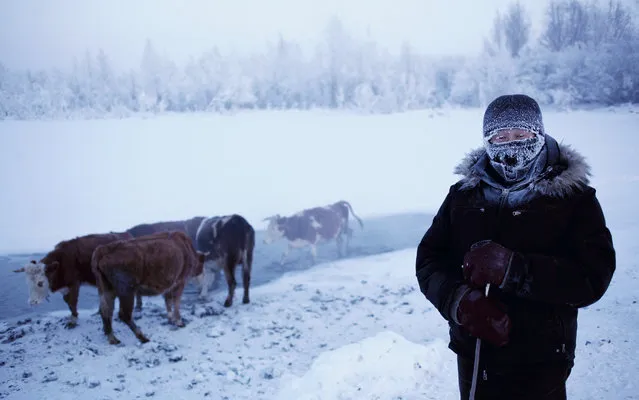
A journey to Oymyakon, considered by many to be the coldest permanently inhabited settlement in the world. The village was originally a stopover for reindeer herders who would water their flocks from a thermal spring at the location. Known as the “Pole of Cold” the town of 500 once recorded a temperature of –71.2ºC. Average temperatures in January are –50ºC. Here: Farmer Nikolai Petrovich waters his cows in the patch of thermal water at the edge of the town. (Photo by Amos Chapple/Courtesy Images/RFE/RL)
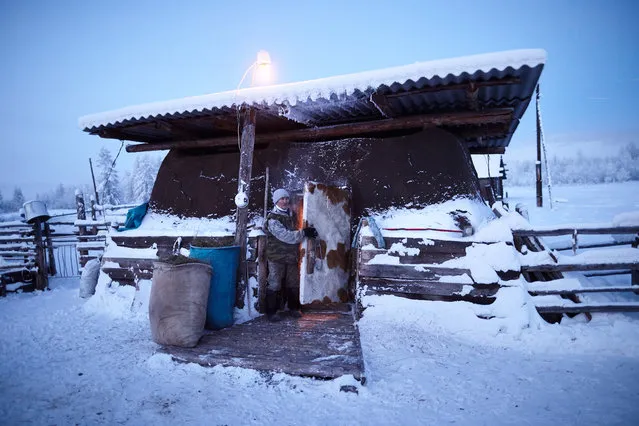
Cows in the village are housed through the winter in thickly insulated sheds like this. (Photo by Amos Chapple/Courtesy Images/RFE/RL)
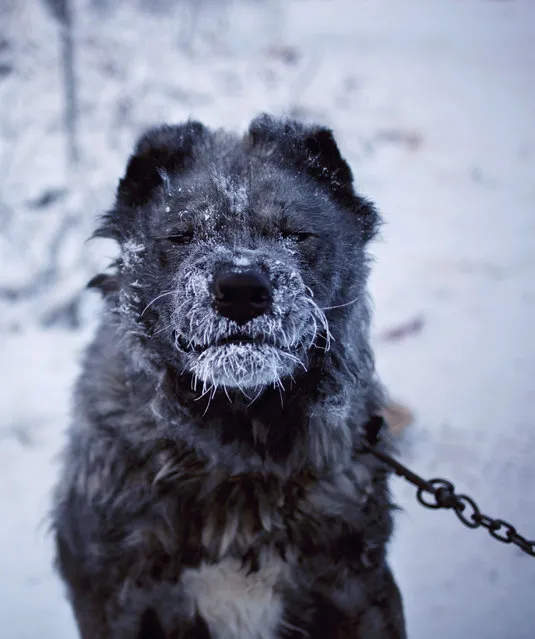
A breed of dog known as the laika has adapted to the cold of the region, though some of the dogs are clearly uncomfortable through nights outdoors. (Photo by Amos Chapple/Courtesy Images/RFE/RL)
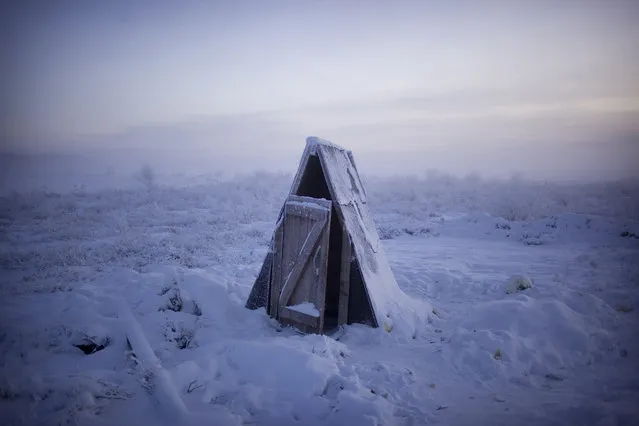
Toilets in the village are simple pits (covered by shacks like this) due to underground plumbing being impractical in the shifting, permanently frozen ground of Oymyakon. (Photo by Amos Chapple/Courtesy Images/RFE/RL)
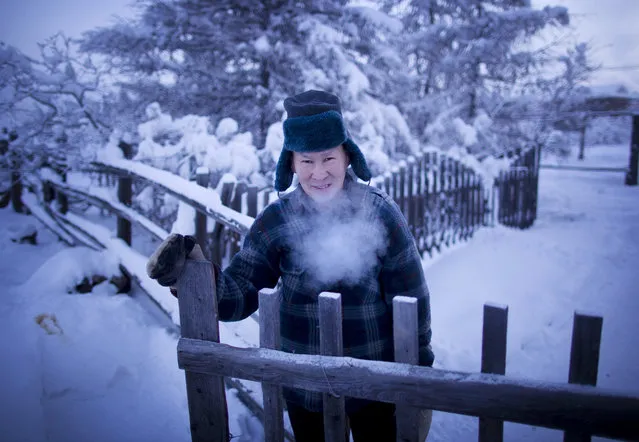
A local in Oymyakon pauses for a quick photo during a toilet run. (Photo by Amos Chapple/Courtesy Images/RFE/RL)
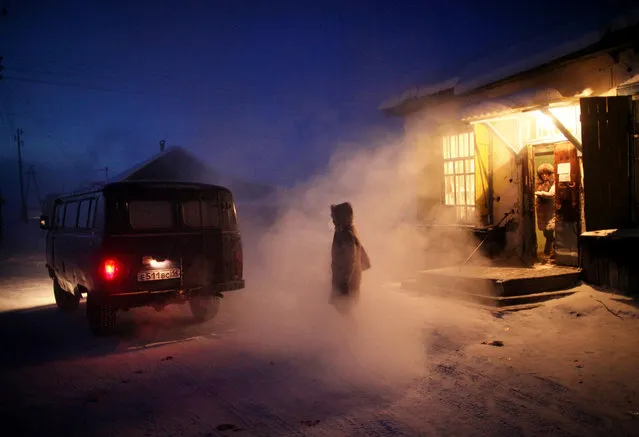
Locals emerge from the village's only store. Chapple says the store was decorated with children's drawings illustrating the evils of alcohol: “It was clearly an attempt by the local school to shame Oymyakon's dads into drinking less”. (Photo by Amos Chapple/Courtesy Images/RFE/RL)
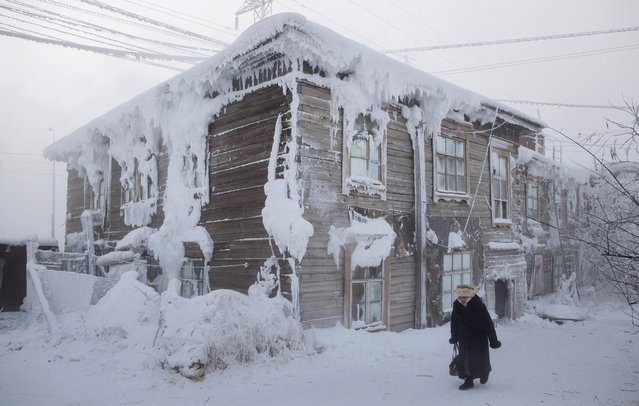
Yakutsk, with a population of around 270,000, holds its own title: that of the coldest city on Earth. Here: Frost-encrusted house in the city centre. (Photo by Amos Chapple/Courtesy Images/RFE/RL)
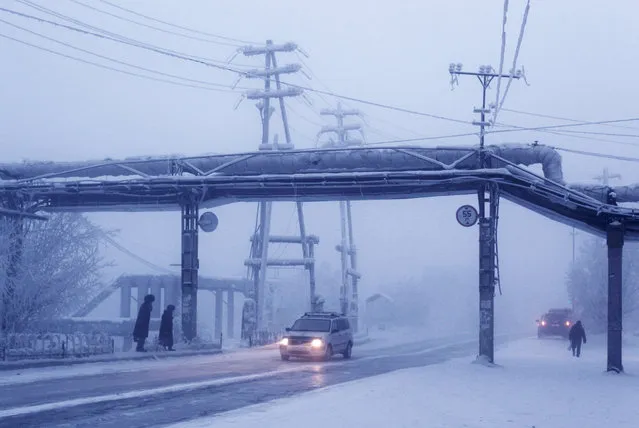
In January 2018, temperatures in the city dropped below minus 50 degrees Celsius. (Photo by Amos Chapple/Courtesy Images/RFE/RL)
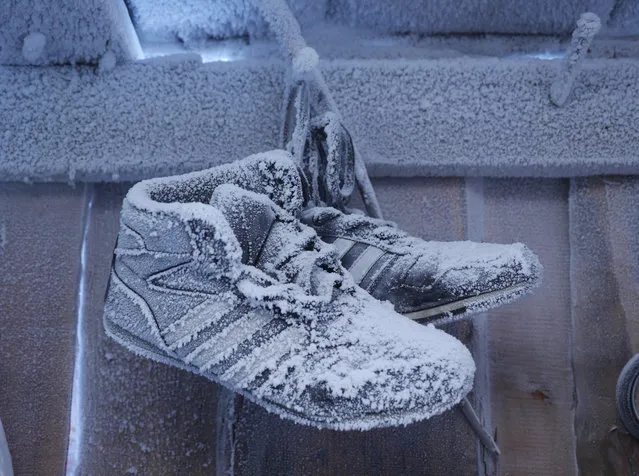
Frozen shoes in a house in Oymyakon. Chapple says the village guesthouse he stayed in was relatively comfortable, if you used a little creativity: “The heating pipes near my bed were sizzling hot, but the walls were icy cold. If you wriggled into just the right position between the two, you could get a relatively good night's sleep”. Here: Summer shoes waiting out the winter in a shed in the suburbs. (Photo by Amos Chapple/Courtesy Images/RFE/RL)
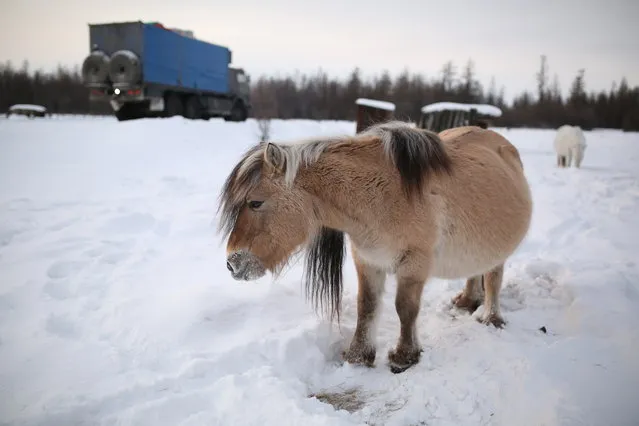
Yakutian horses, known for their ability to live outdoors through the bitter cold of Yakutian winters. The horses feed through the winter by digging through the snow with their hooves and eating the frozen grass below. (Photo by Amos Chapple/Courtesy Images/RFE/RL)
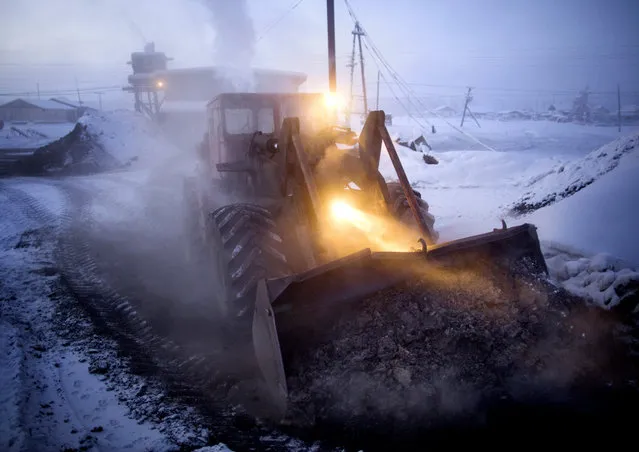
Heating for the town is provided by a coal-fired water heating plant. Every morning this digger delivers fresh coal to the plant & carries away the burnt cinder. (Photo by Amos Chapple/Courtesy Images/RFE/RL)
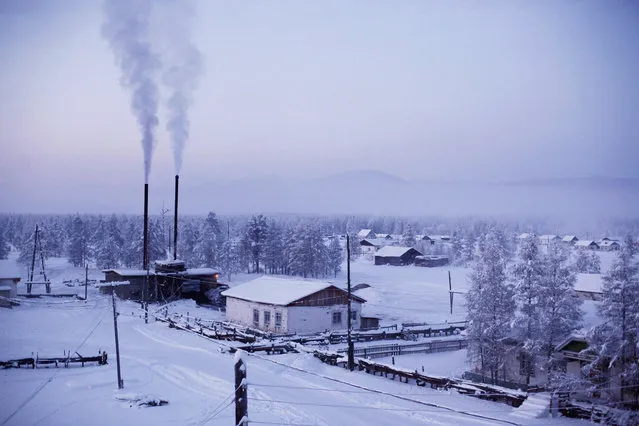
The village of Oymyakon, with its heating plant chugging coal smoke into the freezing air. It was dubbed “The Pole Of Cold” after recording a temperature of minus 71.2° degrees Celsius in 1933. The record freeze was just a few degrees shy of the minus 78.5°C temperature of dry ice. (Photo by Amos Chapple/Courtesy Images/RFE/RL)
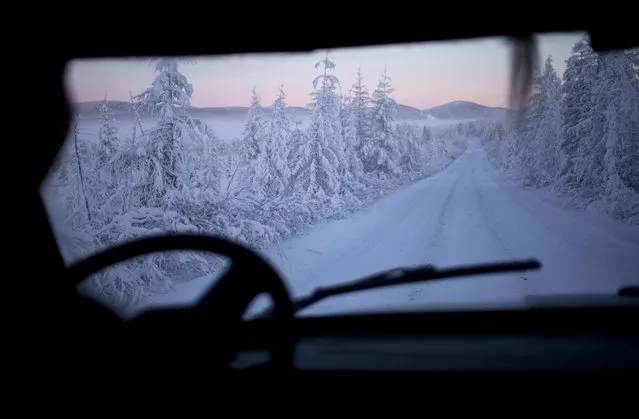
The view from a Soviet-era van during the two-day drive from Yakutsk, the regional capital, to Oymyakon. (Photo by Amos Chapple/Courtesy Images/RFE/RL)
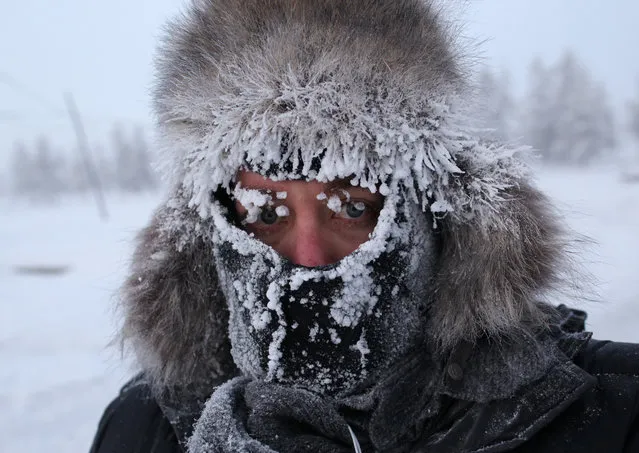
Photographer Amos Chapple while working in Oymyakon. The New Zealander says he occasionally had to avoid drunks in the town who threatened him with violence. (Photo by Amos Chapple/Courtesy Images/RFE/RL)
23 Jan 2018 06:52:00,
post received
0 comments
